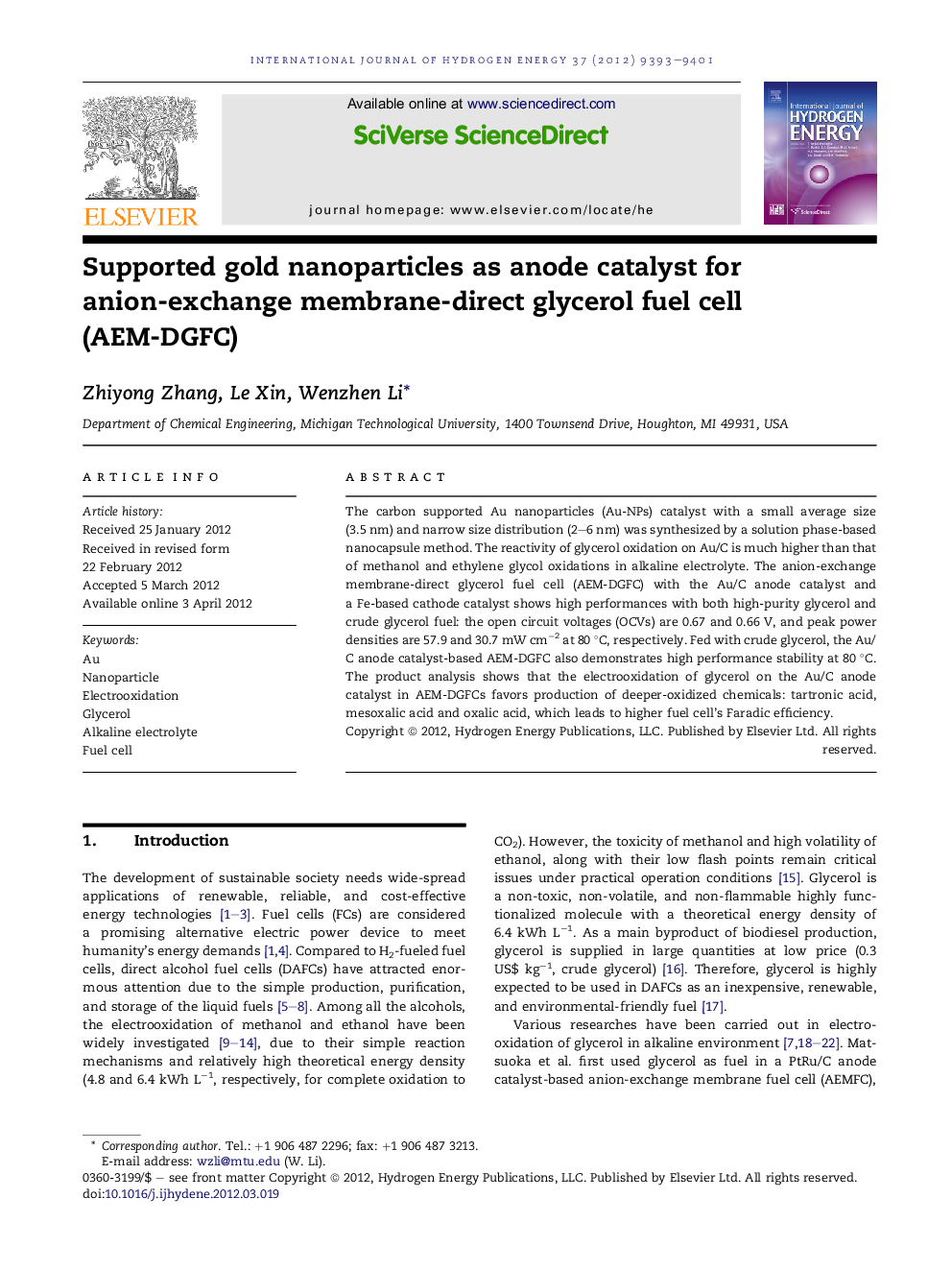| Article ID | Journal | Published Year | Pages | File Type |
|---|---|---|---|---|
| 1271433 | International Journal of Hydrogen Energy | 2012 | 9 Pages |
The carbon supported Au nanoparticles (Au-NPs) catalyst with a small average size (3.5 nm) and narrow size distribution (2–6 nm) was synthesized by a solution phase-based nanocapsule method. The reactivity of glycerol oxidation on Au/C is much higher than that of methanol and ethylene glycol oxidations in alkaline electrolyte. The anion-exchange membrane-direct glycerol fuel cell (AEM-DGFC) with the Au/C anode catalyst and a Fe-based cathode catalyst shows high performances with both high-purity glycerol and crude glycerol fuel: the open circuit voltages (OCVs) are 0.67 and 0.66 V, and peak power densities are 57.9 and 30.7 mW cm−2 at 80 °C, respectively. Fed with crude glycerol, the Au/C anode catalyst-based AEM-DGFC also demonstrates high performance stability at 80 °C. The product analysis shows that the electrooxidation of glycerol on the Au/C anode catalyst in AEM-DGFCs favors production of deeper-oxidized chemicals: tartronic acid, mesoxalic acid and oxalic acid, which leads to higher fuel cell's Faradic efficiency.
► Uniform Au nanoparticles (2–6 nm) were prepared via a solution phase-based method. ► The oxidation reactivity on Au/C in high pH is: glycerol > ethylene glycol > methanol. ► The AEM-DGFC with Au/C anode demonstrated a high power density of 57.9 mW cm−2. ► The AEM-DGFC fed with crude glycerol maintained a 52% peak power density. ► Deeper-oxidized products were generated from glycerol oxidation in AEM-DGFC.
